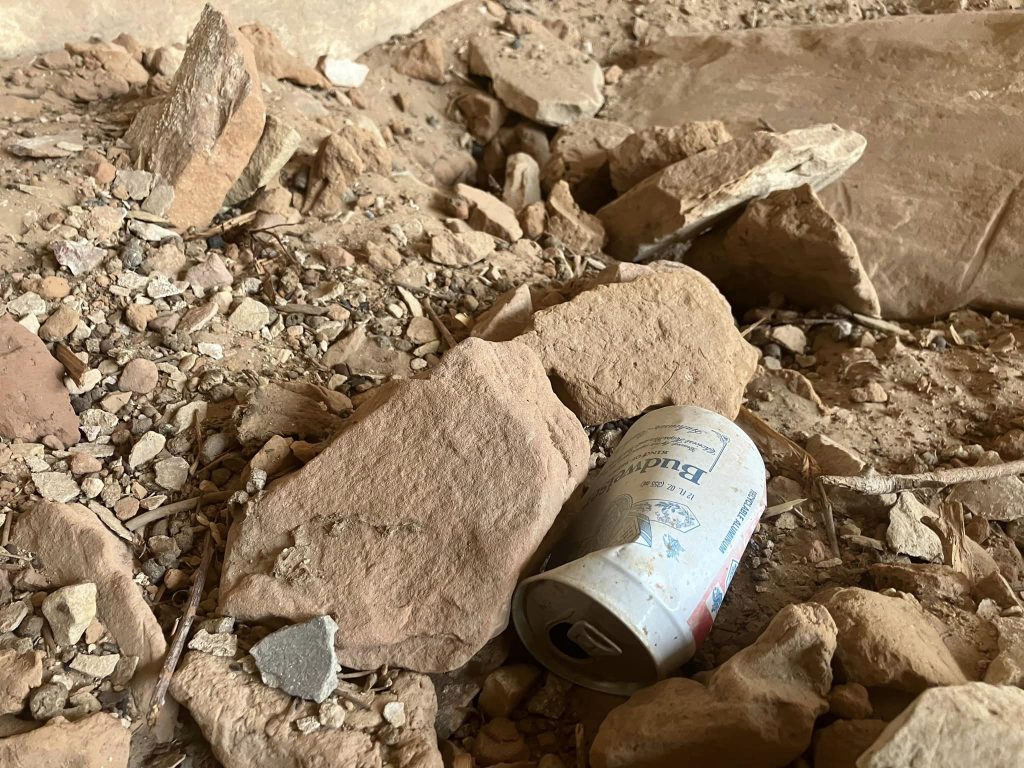Joan summed up our weekend well –
“After camping out on Friday on the way to the ridge, Paul and I woke up to a thunderstorm. As we lay in our tent listening to the thunder booming around us, I proposed that we abandon our original plan to drive up potentially muddy roads and go backpacking up higher. And instead just walk around from our campsite..We didn’t make it further than a mile and a half from our camp as the crow flies, but somehow we spent a full two days and many hours walking up and down canyons, scrambling up ridges, and taking in the breathtaking scenery.”.

From Joan
.
We decided to stay at this place in between the desert and the higher areas.
.

.
From our camp, we could see structures and places to walk, wander, and let our feet take us to places where people walk infrequently.
.

.

.
We saw structures where deer trails form the best path.
.

.

.
Wandering and “seeing what we could see” based on hunches and some adroit use of the camera zoom lens led us into the nooks and crannies near our camp.
.

.
Ancient “Moki steps” covered with lichen lead to structures still mainly intact. A rainstorm confirmed that sometimes it’s best to admire the places from a distance.
.

Another set of steps above the first steps near the canyon floor.
.
We walk the canyon bottoms and the deer trails and often find older gear used by the original inhabitants of this area.
.

Part of a mano for grinding corn.
.

.
Of course, we are not the first people of European descent to visit these places by any stretch.
.

.
An intriguing cave with looter piles hinted at what this area contained.
.

.
And the recent vintage junk left behind indicates more recent pillaging.
.

From Joan.
.
The large potsherds indicated what once existed in this cave and probably not long ago.
.

.

.
At least the impressive panel still seems to have been preserved for all these generations despite the vandalism perpetrated on the rest of the site.
.

.

.
We continued our “structured rambling” [1] not far from camp but many hours later.
.

.

.

.
After a restful night in camp, we again went on some structured rambling to a butte with a promising rock outcropping on top.
.
The black and red port sherds indicated people came from further afield to this area to the very point we found ourselves climbing.
.

.
And the imagery below the butte indicated that we’d find something special on the top.
.

.
After a quick scramble, I found a large, circular outcropping of rocks with a prominent peak due east. It was about what I expected—a serene and special place with no social trails leading to the top.
.

.
We continued wandering and found a large, flat area full of sage at the confluence of two canyons raised just above a river.
.

.
.
Sure enough, we found stone walls in alignment and stone piles indicating older structures with lithics and potsherds abounding.
.

.

.
Perhaps not as photogenic as other areas visited during the weekend, it is a significant place in this region, and no doubt contained more than what we could see with our unaided eyes.
.
Canyon country’s intricacy means we wander up and down the canyons, scrambling up buttes and entering alcoves, yet walk only 1.5 miles from camp. You don’t think of miles hiked; you think of hours spent on the land itself.
.
[1] A comment left on one of my rare videos no doubt got left as a criticism, but I rather like the concept, as I think “structured rambling” describes what Joan and I do every chance we get.
.
